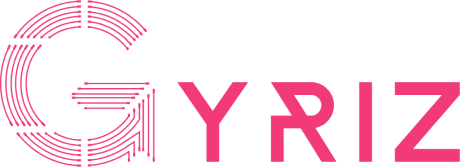The convergence of the Internet of Things (IoT) with renewable energy systems has become a game-changer in the quest for a more sustainable energy future. By integrating IoT into renewable energy infrastructures such as solar, wind, and hydropower systems, energy producers can optimize efficiency, reduce costs, and improve grid management. However, as with any technological advancement, the integration of IoT into renewable energy systems presents its own set of challenges. In this blog, we will explore the benefits and challenges of merging IoT and renewable energy, offering insights into how businesses can harness this synergy for future growth.
The Benefits of Integrating IoT with Renewable Energy Systems
- Real-time Monitoring and Data Analytics
IoT enables continuous real-time monitoring of renewable energy installations, such as solar panels and wind turbines. Sensors connected to these systems gather critical data on performance metrics such as energy output, system efficiency, and environmental conditions. This data can be analyzed to predict performance trends, detect anomalies, and optimize energy production.
For instance, with real-time data, energy producers can adjust solar panels to maximize sun exposure or modify wind turbine orientations based on wind speed and direction. This results in enhanced energy efficiency and minimized downtime.
- Predictive Maintenance
IoT technology allows energy producers to anticipate equipment failures before they occur. By monitoring the health of components like solar inverters and wind turbine blades, IoT systems can predict when maintenance is needed, preventing costly system outages. This proactive approach reduces downtime and extends the lifespan of renewable energy assets, ensuring higher long-term profitability.
- Grid Integration and Optimization
As renewable energy sources are often decentralized, integrating them into the existing grid can be challenging. IoT-enabled smart grids can automatically balance energy supply and demand, responding to fluctuations in renewable energy production. Through real-time data exchange between energy producers and the grid, IoT helps prevent overloads and ensures stable power delivery.
Moreover, IoT devices can coordinate with energy storage systems, such as batteries, to store excess energy generated by solar and wind sources. This stored energy can be used during peak demand periods, improving the grid’s reliability and reducing reliance on fossil fuels.
- Enhanced Energy Efficiency
IoT-based systems enable better energy management by automating and controlling energy usage in real-time. This can be applied at both the macro level (power grids) and micro-level (smart homes and buildings). For example, IoT devices in homes can adjust heating, lighting, and appliance usage based on real-time energy availability, contributing to a more sustainable and efficient energy consumption model.
Challenges in Integrating IoT with Renewable Energy Systems
- Cybersecurity Risks
The integration of IoT devices with renewable energy systems increases the risk of cyberattacks. These devices are interconnected and often lack robust security features, making them vulnerable to hacking. A successful cyberattack could disrupt energy production, damage equipment, or even cause widespread power outages. Therefore, ensuring the security of IoT networks is critical for safeguarding renewable energy infrastructures.
- Data Management and Privacy Concerns
With the widespread use of IoT in energy systems, vast amounts of data are generated daily. Managing and analyzing this data requires advanced analytics platforms and substantial storage capacities. Additionally, privacy concerns arise, as data related to energy consumption can reveal sensitive information about households or businesses. Ensuring proper data governance, including compliance with regulations like GDPR, is essential.
- Interoperability Issues
IoT ecosystems often consist of devices from different manufacturers, each with its own communication protocols and standards. Ensuring interoperability between these devices can be challenging, especially when integrating them into complex renewable energy systems. Standardizing IoT communication protocols and ensuring compatibility across devices are necessary steps toward seamless integration.
- High Implementation Costs
The initial cost of deploying IoT devices and systems within renewable energy projects can be high. This includes the cost of hardware, software, and the infrastructure needed to support IoT deployments. Additionally, there are ongoing costs related to system maintenance, upgrades, and cybersecurity measures. For smaller energy producers, these costs may present a significant barrier to adoption.
Conclusion
The integration of IoT with renewable energy systems holds immense potential for optimizing energy production, enhancing efficiency, and driving sustainability. By enabling real-time monitoring, predictive maintenance, and smart grid management, IoT can revolutionize the renewable energy landscape. However, the challenges of cybersecurity risks, data management, interoperability, and high implementation costs must be carefully addressed to fully realize the benefits of this technological synergy.
For businesses in the energy sector, embracing IoT technology can offer competitive advantages by improving operational efficiency, reducing costs, and contributing to a greener future. With proper planning, investment, and security measures, IoT can unlock new levels of innovation in the renewable energy industry.
References:
- Harvard University – Energy Policy Research
The Role of IoT in Renewable Energy Systems - McKinsey & Company – Energy Sector Insights
IoT and the Future of Smart Energy Systems - World Economic Forum – Renewable Energy Innovation
How IoT is Shaping the Energy Industry - United Nations – Sustainable Energy for All
IoT and Renewable Energy: A Sustainable Future
